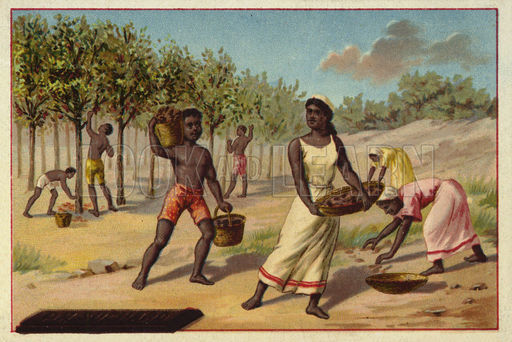European Influence Sends Cacao to Africa
Origins of the Cacao Bean
The use of cacao beans can be traced as early as 1500 BC [1]. Early civilizations in Mesoamerica would grind the beans of the native cacao tree with other ingredients to make a bitter invigorating drink. These beans were coveted and possessed religious significance. Europeans came into contact with the beans as early as 1502 when Christopher Columbus returned from his expedition in the Americas. However it was not until they started mixing the cocoa with sweeteners that it gained traction as a fashionable and aristocratic drink[3].
Cacao Rises in Popularity
Cacao was difficult and time consuming to produce on a large scale and as cocoa became more popular cocoa bean production could not keep up. To alleviate this issue Europe looked to their colonies. Instead of shipping African slaves to cocoa plants in South America and the Caribbean, production would shift to countries such as Ivory Coast, Ghana, and Mali[2].
1. Wood, G. A. R.; Lass, R. A. (2001). Cocoa (4th ed.). Oxford: Blackwell Science. p.
2. “History of Chocolate - Chocolate History Timeline.” The Gourmet Chocolate of the Month Club, www.chocolatemonthclub.com/chocolate-history.htm.
3. The History of Chocolate: Europe, www.godivachocolates.co.uk/the-history-of-chocolate-europe.html

